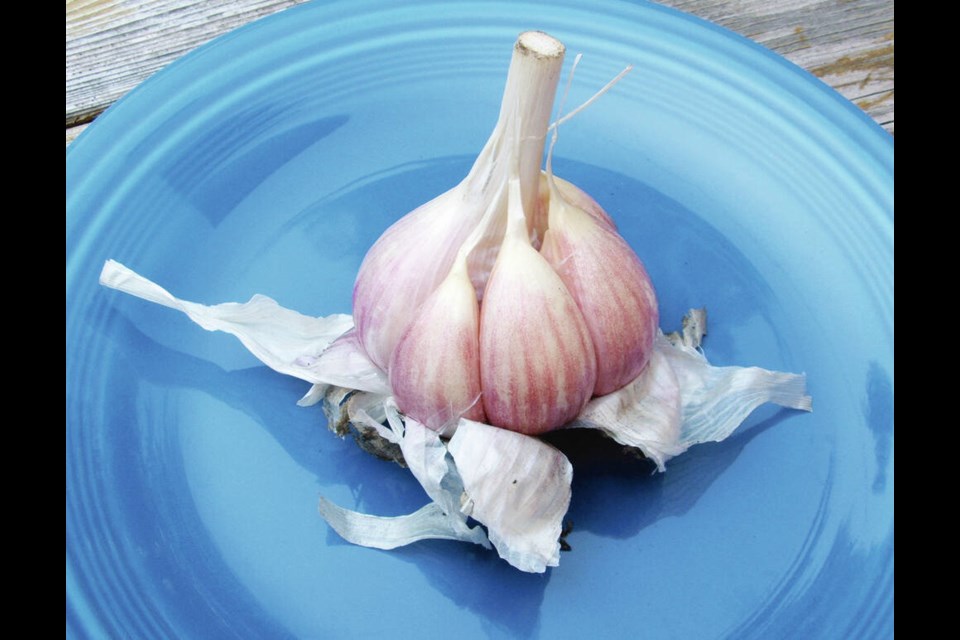Dear Helen: It’s been such an odd gardening season so far. My garlic plants are still mainly green. When should I dig the bulbs?
J.D.
Garlic bulbs are usually dug during the second half of July, when roughly half the top growth has turned brown. Because of the prolonged cool weather through the spring, harvest time will be delayed in most gardens. Let the state of the stems and leaves be your guide.
It’s a good idea to dig a trial bulb or two ahead of the harvest. The bulbs should have well developed cloves, clustered tightly together, each enclosed in its own papery cover.
When the bulbs are left too long in the ground, the cloves begin to separate. These overgrown bulbs don’t usually store well.
Dear Helen: I recently heard a group of people talking about “starflower.” What were they probably referring to? I did not have a chance to ask them.
N.I.
I know of more than one plant referred to as “starflower,” but the main one is a small, carpeting perennial native to our region. It is broad-leaved starflower (western starflower, Trientalis latifolia, T. borealis).
This is a little charmer, bearing low-growing whorls of broadly oval leaves. In May, from the centre of each leaf whorl, slender, curved stems emerge holding pink-tinged white flowers. They are a familiar late spring sight in my garden, which is carved out of forested land.
The common name “starflower” was given to Trientalis because of the thin, almost invisible flower stems that allow the little blooms to look as though they are hanging in the air, like stars.
The name Trientalis in Latin refers to the approximate height of this little native perennial: one-third of a foot.
A much taller, flower garden perennial actually contains the Latin for “star” in its mane, The perennial is Astrantia, from aster: a star. The allusion here is to the flowers’ star-shaped bracts. Astrantia is sometimes referred to as starflower.
Dear Helen: Are plantings in general later than usual this year? Much of what I’m growing seems more than a little behind.
L.L.
You are not alone, and the weather-delayed plantings are causing traffic jams in many gardens, at least for those who count on having plantings like garlic and early seeded peas finished and out of the way by mid-July, in time for planting winter vegetables like cabbage, sprouting broccoli, and over-wintering cauliflower in the vacated spaces.
Dear Helen: Why do my cauliflower plants form nice little heads that proceed to separate into individual florets on elongated stems before they can develop proper heads?
D.T.
In this past cold spring, cauliflower plants set out early could have been tricked into acting as though they were experiencing winter. In many plants, the follow-up to coming through winter is to send up flower stems and form seeds.
This is a common cause for the problem. Other stressors that can cause a developing head of cauliflower to branch out into separate sections:
* An abrupt change in temperature.
* Setting out transplants that are overgrown.
* Lack of adequate moisture in the soil.
* Wet conditions as the heads are forming.
* A soil that is too loose. For vegetables that form heads, like cabbage and cauliflower, transplants need to be very well firmed in.
Dear Helen: The garlic patch in my garden will soon be ready to dig up, while I still have bulbs left from last year’s harvest. I’m not sure whether to discard them or find some use for the year-old bulbs.
K.P.
Unless the cloves in last year’s garlic bulbs are almost completely dried out, I’d use them. The way I use garlic “extras” is to peel the cloves, slice them in half to remove the bitter core, drizzle them with oil and roast them in a heavy, covered pan.
I don’t roast the cloves at the commonly recommended high heat. I leave them roasting at around 325 F only until they have thoroughly softened. I don’t want them burned.
Cooled, the roasted cloves can be kept for two weeks in the fridge. Mine never last that long. The softened cloves have many uses — in salad dressings, blended into mashed potatoes, chopped or sliced into vegetable dishes, soups and stews.



